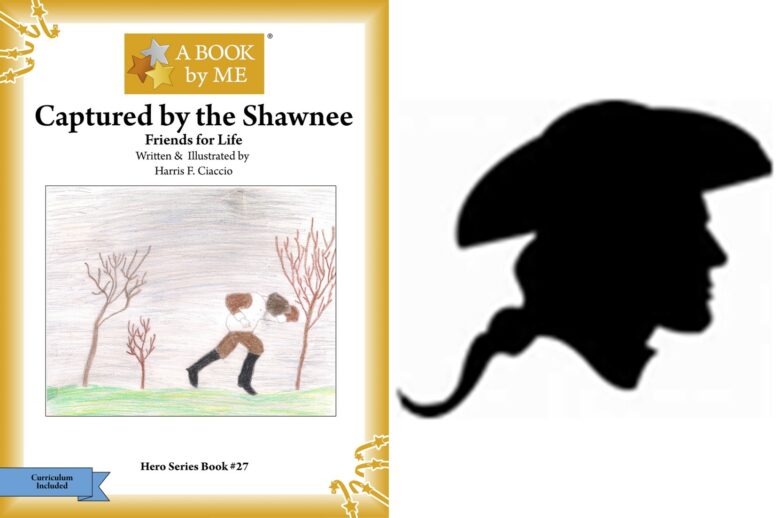Captured by the Shawnee:
Friends for Life
Richard Rue - Revolutionary War, War of 1812
Written and Illustrated by Harris Ciaccio
For the series A BOOK by ME - True Stories Written by Kids for Kids
I’m a proud member of the National Society of Daughters of the American Revolution (DAR). Three of my ancestors fought the British for America’s freedom on my father’s side of the family and two on my mother’s side. I know a bit about the stories of my ancestors, quite a bit in one case, but a friend in DAR knew a whole lot about her ancestor’s lives. That’s how this book about Richard Rue came to be.
During the Revolutionary War, Richard was sent on a scouting mission and was captured by the British. He was traded to the Shawnee, an Indian tribe who considered him the enemy since they sided with the British. Richard was forced to “run the gauntlet.” This means he ran in the middle of two lines of the enemy while being struck with their weapons. Thankfully, he survived this when a kind Shawnee chief saved his life.
Young author Harris Ciaccio said this, “I say thankfully because I wouldn’t be here if it weren’t for this kind Indian chief. I believe understanding our American history is important. As a member of Children of the American Revolution (C.A.R.), I’ve become very patriotic and thankful for the freedom this man Richard Rue and so many others have defended. Many died for the freedom we enjoy in this country.”
I couldn’t have said it better myself!
God bless America.
Deb Bowen
“I believe understanding American history is important. This story is special to me and my family and I hope you enjoy reading it.”
Author/Illustrator Harris Ciaccio
Richard Rue – Revolutionary War, War of 1812
At the time of Richard Rue’s birth, his family owned a peach tree orchard and also farmed in rural Maryland. The entire population of the colony of Maryland in 1760 was only 220,000. That’s the size of Aurora, Illinois and Little Rock, Arkansas.
Richard Rue was less than a year old when his mother, Olshe (Vansant) La Rue, died. By the time Richard was six, his father, Samuel La Rue, also died, which left Richard an orphan. His older sister Mary and her husband Edward Holman took him in and raised him.
The family moved from Maryland to Pennsylvania/Virginia area. Due to a lack of maps and surveying of land, the boundaries of Pennsylvania and Virginia were in dispute. Both states claimed ownership and attempted to tax the residents. In the 1730s, both states’ militias began fighting until the King of England declared a cease fire. The boundaries question was finally resolved 1767 after surveying was done as part of the Mason-Dixon Line.
The family finally settled in the far western portion of the Virginia colony in what is today Louisville, Kentucky. There was a large native American population nearby including the Shawnee, Illinois, Chillicothe, Kickapoo, Sauk, and Miami nations. In 1777, at the age of 17, Richard (who was now going by the last name of Rue) joined George Rogers Clark’s Kentucky militia to fight Indians and the British. Not only had one of his ancestors been killed, there were many raids on nearby settlements and on Fort Harrod where he was living, which cost the lives of several people. He fought in several campaigns in the Illinois territory. While on an expedition for Clark to get supplies for the troops, Richard and his cousin George Holman and another soldier were captured by the Shawnee Indians.
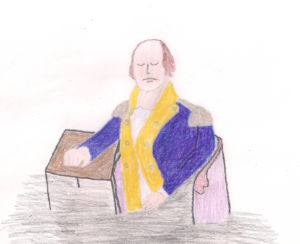
Each captive was forced to “run the gauntlet.” This consisted of running between two rows of Indian warriors who would strike them with their hatchets, tomahawks and war-clubs. The first captive fell, tried to escape, was eventually recaptured and burned at the stake. Richard was forced to “run the gauntlet” twice.
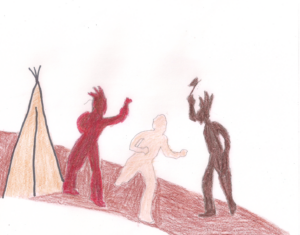
Afterwards, he was tied to a stake. Both Holman and Rue prayed to God to save them. Just before he was to be burned, a Shawnee warrior took Richard and gave him to the warrior’s mother in place of a brother who had been killed. His cousin George was also permitted to be adopted by another family to replace a lost son. Not all members of the Shawnee agreed with this but were required to go along with the Chief ’s decision.
The captives were marched several days north until they reached an Indian village on the Maumee River, a few miles above where the city of Toledo now stands. They were again forced to “run the gauntlet” there. Holman was taken back to an Indian town near where they were captured, and Rue was taken to several different towns along the Wabash and Illinois rivers, including where Peoria and Kankakee now lie. He eventually was taken to Detroit for the rest of his captivity. Although he was initially tortured, he was finally treated fairly well. However, he was told if he planned to escape, he would be caught and burned at the stake.
The Prophet, a Shawnee considered to be someone who could see the future, told Rue he would again see his family.
While in Detroit, the Shawnee eventually sold Richard to the British as a slave. He spent the rest of his captivity being mistreated by the British. The British would take his moccasins every evening to keep him from escaping. After a total of three-and-one-half grueling years, Richard did in fact escape. He had to walk barefoot through the wilderness, traveling by night without eating or stopping to rest. With the dawn of day, he would find a hiding place until dark. Unable to find any game for several days, starvation stared him in the face. He finally was able to bring down a small deer buck. He wasn’t able to make a fire for fear that the smoke would give away his location.
On the twentieth day of his escape from Detroit, Richard came upon the Ohio river about 50 miles from Louisville. He finally arrived at Harrodsburgh to the surprise of his loved ones who had thought he was dead. A couple of days later a rich uncle ransomed Richard’s cousin Holman from the Shawnee. There was great rejoicing when the two were reunited.
Upon returning home, Richard discovered that his family, thinking that he was dead, had sold his land to Daniel Boone’s father, Squire Boone (Squire being his given name, not an honorific title). Rue decided that Boone was an innocent purchaser and allowed Boone to keep the property.
After returning from captivity, he again enlisted, this time as a Major, in General George Rogers Clark’s expedition along the Wabash river. Richard then joined William Henry Harrison in his campaigns against the Indians. He and Harrison became close friends. In the Battle of Fallen Timbers in 1794, Harrison served as aide-de-camp for “Mad Anthony” Wayne. This victory opened most of the Ohio area to settlement. Harrison was appointed governor of the Indian Territory and negotiated hard with the tribes, bringing millions of acres of land under U.S. control, including much of the southern portion of Indiana.
Settling down, Richard purchased 500 acres near what is now Louisville, Kentucky. He farmed that land and purchased another 900 acres. Although he was a successful farmer, his wanderlust personality led him to new lands. Richard moved on to establish three towns: New Castle, Kentucky (1798); Abington, Indiana (1804); and Richmond, Indiana (1806). He was appointed Justice of the Peace by the governor at both New Castle and at Richmond. Due to his success as a farmer, to his reputation as a fair judge and to his great love for God, education and the law, he generously donated land for a church, a school, and a courthouse at both New Castle and at Richmond.
In 1809 and 1810, Richard, in addition to being a landowner, farmer and Justice of the Peace, became a member of the Territorial Legislature House of Representatives from his county in the Indiana Territory. When the War of 1812 began, Richard once again joined in service to fight the British.
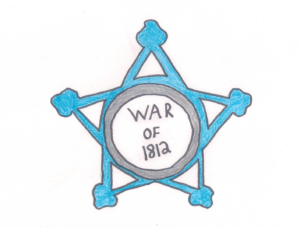
Rue’s friendship with Harrison came to an end when Harrison, as governor of the Indiana Territory, and a slave owner, signed many pro-slavery laws. Rue’s experience as a slave under the British truly influenced his opinion of slavery, and he and Holman led the anti-slavery element in Indiana. This issue almost split Indiana into two parts, half as a free state and half as a slave state, before it eventually became a totally free state. The once close friendship between Rue and Harrison was forever dissolved as Harrison proceeded to run on a pro-slavery ticket for President in 1840.
Richard’s Shawnee friend, Tecumseh, and other members of the tribe who were Rue’s adoptive relatives visited Richard annually for many years. The visits were a source of great pleasure to both parties. The Shawnee held Richard in loving esteem until his death.
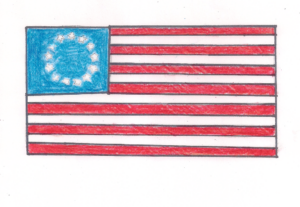
After the War of 1812, Richard left the military service for good and spent his time accumulating great wealth. He owned a considerable amount of land and spent the rest of his life as a farmer, and as a Justice of the Peace or a State Representative. Richard Rue died in 1844, at the age of 84, having lived a full and exciting life. He was buried in the Elkhorn Cemetery in Richmond, Indiana.
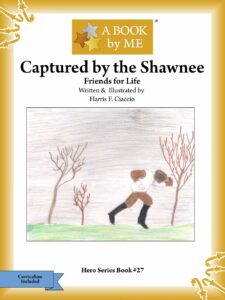 Captured by the Shawnee: Friends for Life – Part of the Valiant Veterans Set
Captured by the Shawnee: Friends for Life – Part of the Valiant Veterans Set
In great detail, Harris Ciaccio writes about his remarkable ancestor, Richard Rue. In the 1700’s Richard fought the Indians and the British, and was captured, tortured and enslaved. After escaping these difficult situations, he eventually achieved great success and wealth. Read about his amazing life in early America.
Shop A BOOK By ME

Author Harris Ciaccio
“It’s important to learn about and preserve our country’s history. The best way to do this is by reading about our ancestors’ lives during historical periods of time. My 6th great-grandfather, Richard Rue, led an extraordinary life, facing and overcoming major challenges. Yet, throughout his life he always donated to his community. I hope by telling his story, readers will be able to see the American Revolution and development of the American frontier through his life experiences.”
Author/Illustrator Harris Ciaccio
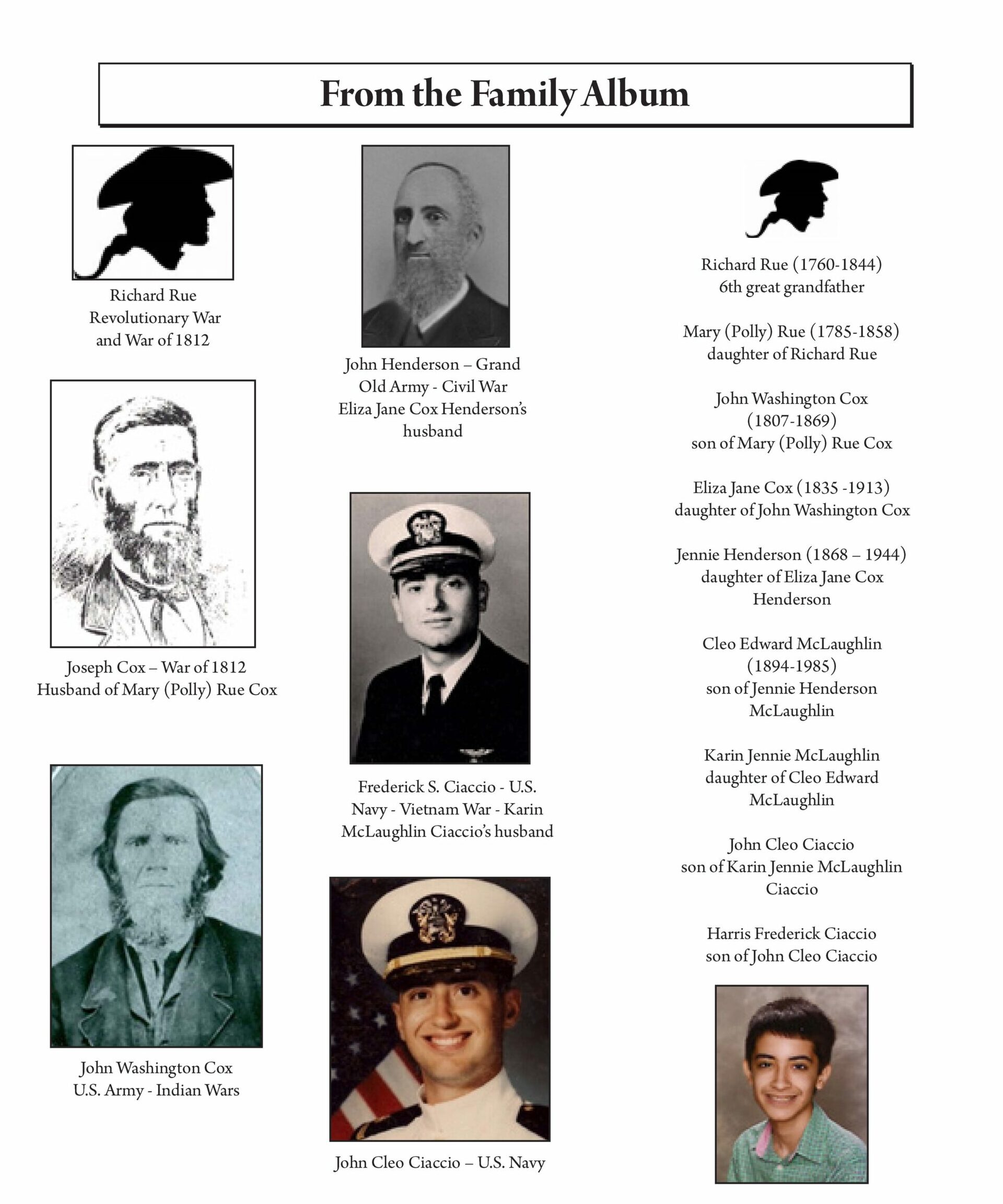
“All men are created equal and have the right to life, liberty, and the pursuit of happiness.” Thomas Jefferson, In the Declaration of Independence, July 4, 1776
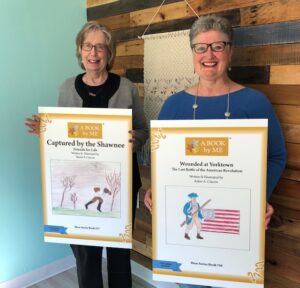
DAR Member and Grandma Karin Ciaccio (L) was writing coach for two grandsons who told their ancestors stories. She’s pictured here with A BOOK by ME’s Deb Bowen (R)
A BOOK by ME, a book series developed by Deb Bowen, empowers students to preserve history by telling the story of unsung heroes in our communities. For the young participants, it’s a guided cross-curricular project that gathers stories of people who do amazing things but have received little or no recognition. Students learn how to publish a picture book that is a primary source document with photographs and a biography.
Since 2003, Deb Bowen has been arranging meetings between students and individuals from the WWII generation. This intergenerational storytelling results in unique storybooks written and illustrated by kids for kids in the A BOOK by ME series. More about Deb Bowen >

